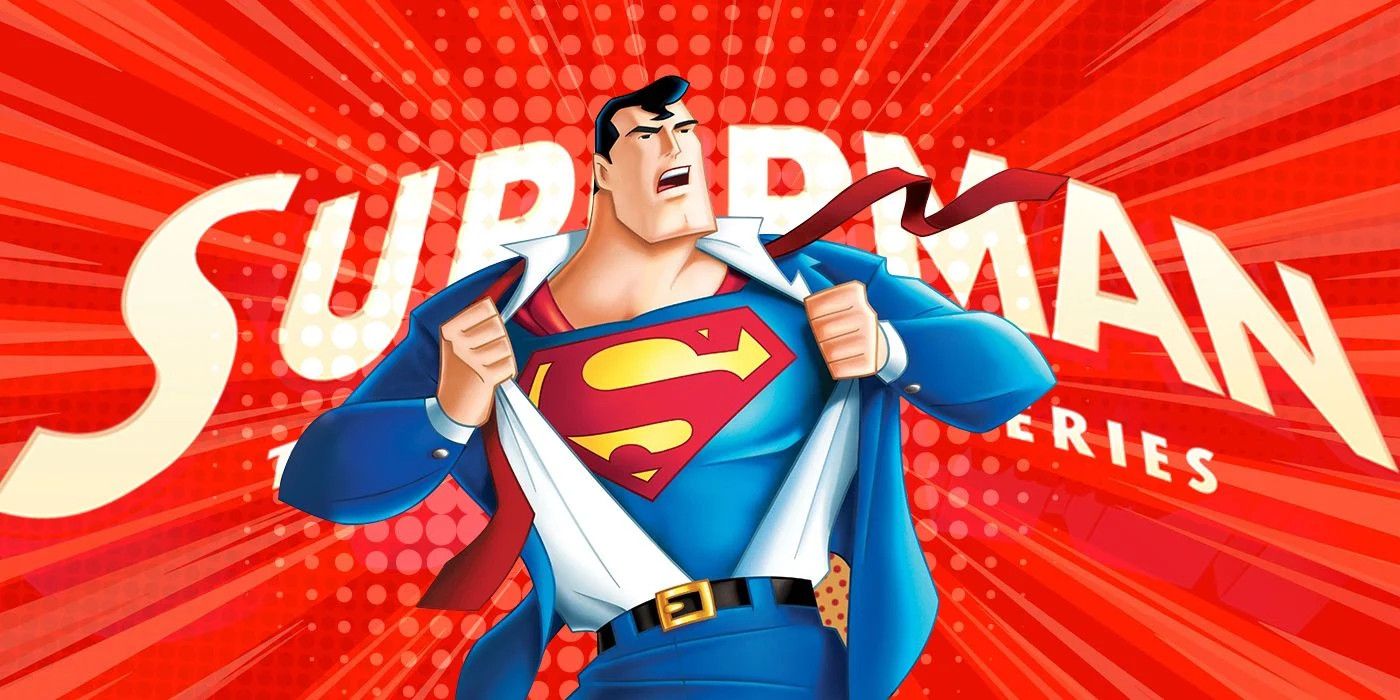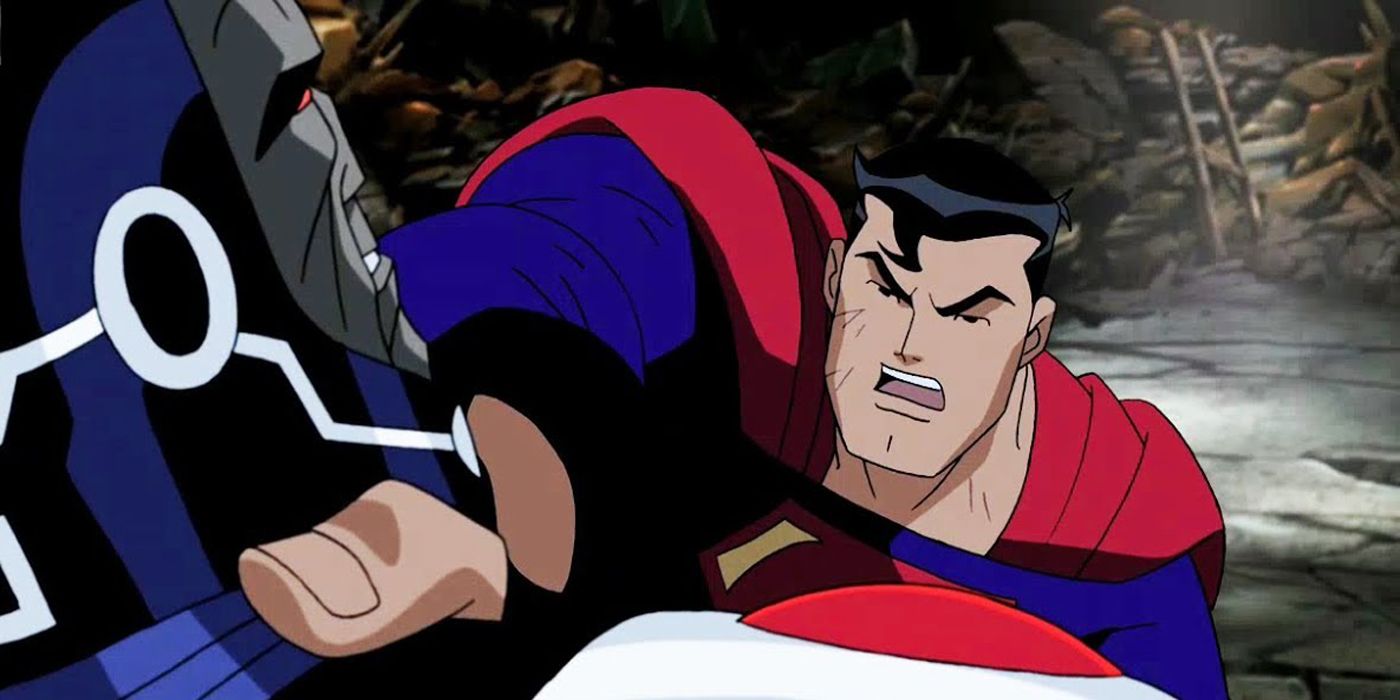Following in the steps of its predecessor, Batman: The Animated Series, Bruce Timm's Superman: The Animated Series has a Blu-Ray remaster of its own. The set contains 21 hours of content across six disks, including extra features and commentary, and the remaster is sourced from original 35mm and audio recordings.
Bruce Timm is responsible for some of the most iconic interpretations of DC characters across multiple animated series and movies from Batman and Superman to Justice League and Justice League Unlimited. In light of the remaster's release, Bruce Timm spoke with Screen Rant to discuss the series and how Superman has been adapted to different mediums over the years.
From the complexities that come from adapting a major character like Superman to different audiences over the years to if, when, and how Superman should kill to his opinion on whether or not Superman's costume should have red trunks, Timm revisited Superman: The Animated Series to answer Screen Rant's biggest questions.
Screen Rant: Something that I think is interesting in remastering this series is it’s something that was so iconic when it came out and defining for a generation of Superman fans, yet Superman has evolved a lot over time and has a lot of different interpretations. How do you think that that impacts the way you would develop something like a Superman show in 2021 versus in the 90s? And how do you feel about the relevance of this version of Superman now getting this rerelease decade later and its place in the zeitgeist?
Bruce Timm: I haven't actually watched much of the show recently, but I would imagine that it still holds up pretty well. We definitely made some specific decisions to make the show somewhat separate from our Batman show. It's not as dark, it's not as spooky, it's not quite as retro, but it does have a little bit of that same kind of timeless feeling, so hopefully, it will not have dated all that horribly.
In terms of what to do with that nowadays in 2021, you know, personally, I don't have to worry about that because it's not my job. But there are interesting things happening in the Superman world and in live-action and in animation as well. There's the new Superman and family show, which was really interesting to me. That's a different spin on it.
Everybody always makes the joke that the comics are kind of like our R&D division. They get to try out all the weird ideas, but it's kind of true, they've come up with some really interesting takes on Superman in the last couple of years like the whole Superman and Sons thing. There's lots of different influences to pull from, I would think if I was gonna do a new Superman project at the moment.
When a lot of these animated shows get remastered the aspect ratio will be changed to widescreen. Recently in live-action when Zack Snyder's version of Justice League was released it made headlines because he made that in 4:3 and it had this big banner before the movie started that said: “to preserve Zack Snyder's creative vision, this is being presented in 4:3.” Since this is something you originally designed that way and then it’s preserved with the re-release how does that influence the way that you portray the character in that aspect ratio?
Bruce Timm: I don't know about the character but I do keep in mind whatever aspect ratio the show is for what it's going to be re-released in and we designed for it. So Superman, of course we designed specifically for 4:3, and so we do give that stuff some thought. I mean, on a show like Justice League, famously, the first two seasons of Justice League we had to shoot it full-frame, but we designed it to work both in full-frame and widescreen and we actually tried to get it released that way when the first season initially aired, so there was a little bit of leeway there, but a show like Superman, we were using every square inch of that frame top to bottom. So, it could be converted to widescreen, but it would take somebody literally watching every single scene and making sure that matte would work with it.
I'm always interested in how that frame is utilized and how that changes the perception.
Bruce Timm: It really shouldn't be one-size-fits-all. I watch a lot of streaming like everybody else does and one of the things I love is how on, HBO Max, besides all the new content, there's stuff like the old Addams Family show on there. It's like, "Oh, great, I haven't watched Addams Family in a long time, and thank God they're on there in full-frame. They're back on their 4:3", and people are smart enough to realize, "Oh, hey, my TV isn't busted because I'm only seeing a tiny square in the middle."
And here's the thing about Zack's movie, I was laughing when I first watched it, the fact that he went 4:3, I'm like, '"Is he just trying to be different, or what?" But it actually really worked and it's strange because you're so used to having things like these big epic movies being more widescreen. And after a while, you didn't even notice it anymore. It was just like yeah, he composed every shot for the frame, and it really works. It's really cool. So, you know, whatever, more power to him.
With Superman, because you have different people who are introduced from different iterations, it's hard to determine what is the definitive version of Superman. Is there a checklist of unshakable checkboxes in the way that he's portrayed? How hard is that as someone who's developing a Superman story to stay true to the character but not make it just a simple paint by number 'this is who Superman is'?
Bruce Timm: Well, you know I think you've kind of put your finger on the answer just by saying that. There's been so many different versions of him previously, and just as we did with the Batman show we kind of cherry-picked parts of different Superman shows and cartoons and live-action and movies and everything, just the things that we liked, so it's kind of The Princess Bride way of doing it, like we leave out all the boring parts, we just give you the good stuff.
He definitely has some challenges because his costume is pretty old fashioned and it's in primary colors, we did certain things with that, just with the color palette to kind of darken the blue and put a little black on his trunks to kind of make it look like the comic books, but it's still a really strong, kick-ass design.
The biggest thing was, at the time, in the comics, Superman had come back from the dead and he came back with a mullet. And DC Comics was pushing really hard to give him a mullet in our show, and I was like, "No effing way am I giving him a mullet!" And they're like, "Oh but this isn't just a flash in the pan, this is gonna be his look from now and forever" and I'm like, "No, it's not. A year from now he'll be back with his short hair. I know it." And literally, the decision had to go all the way up to the head of Warner Brothers. Bob Daly had to weigh in and he said, "No, I think we should go with a classic look." It was crazy, but, yeah, I definitely resisted updating that.
Since you also touched on the trunks there, do you have an opinion on trunks versus no trunks debate?
Bruce Timm: Not anymore. I mean, when they got rid of both Batman and Superman's trunks, at first I just went. "That looks weird." It looked like they were exposed somehow because, for my entire life, both of those guys had their underwear on the outside. But now I'm used to it, so I don't really have a strong opinion on that either way. You know, it's like, it's fine. Either way works for me.
It's said that Darkseid is the only person Superman is willing to kill in Superman: The Animated Series. Is that true, and is that a firm line, or is there a more absolute answer to that? How do you determine when that is and is not okay with a character like this?
Bruce Timm: You know, it depends on the specific projects. When we did the first of our direct-to-video movies, Superman: Doomsday, I actually literally wanted Superman to break Doomsday's neck to stop him. And again, DC Comics had a really big problem with that. They said, "Nope, Superman will never kill, no matter what. He will always find some other way." And I had arranged it so that it was exactly like what happened in Man of Steel, where Superman was being held immobile and innocent people were about to get killed, and I thought, "Well, Superman is gonna do the only thing you can do, which is to break Doomsday's neck." And they just wouldn't let me do it.
But now, again, that was for a project that I knew was supposed to be more adult-oriented, and it was gonna be PG-13. I probably wouldn't have gotten there at all if it had been just a children's animated program for television. And the only time we even flirted with the Darkseid thing was in the Justice League episode where, he's literally coming this close to saying, "Yeah, I want to kill that guy", but it's really just more a matter of, as Dwayne McDuffie, God bless him, as he once put it, he gave us that great "I live in a world of cardboard" speech, where it's like Darkseid is one of the few bad guys that he can actually let loose on and not worry about him being killed and vaporized instantly.
Everybody else Superman always has to pull himself back a little bit, but with Darkseid, he could just go at it. Darkseid is psychologically... he's the one guy who can get under Superman's skin unlike any of the other characters, even Luthor. He's the guy that pushes all of Superman's buttons in the worst way. He brings out the worst in him.
A famous interpretation of the character frequently cited is from Quentin Tarantino’s Kill Bill when Bill gives the speech about the difference between Clark Kent and Superman and says that Clark Kent is not Superman's true character. It's a persona he takes on and serves actually as Superman's critique of what he believes humanity looks like. Are you familiar with that? Do you agree with his take on that, or where do you think you draw the line between Clark and Superman?
Bruce Timm: I don't have an overall one-size-fits-all view of that. I can see both sides of it. I actually - the way we always portrayed him is that Clark Kent was more of his true nature in the Superman show and in Justice League. It's like he's the guy who was born and bred, or he was born on Krypton, but he was raised by two God-fearing people in the midst of the American Heartland. So they imbued him with all of their sense of right and wrong and morality. So, I think that's as much a part of him, his human part is as much a part of him as his Kryptonian superpowers.
Superman: The Complete Animated Series remaster is out now on Blu-Ray.


